Puerto Rican Food Dishes: Basic Overview
Common Ingredients
Common Cooking Methods
Courses
Meals
Key Taste
Eating Etiquette
Meal Presentation
Culinary Festivals
Influence and Fusion
Popular Types of Puerto Rican Dishes
-
Cakes and Pastries
In Puerto Rico, this category embraces a variety of sweet and savory baked goods, often utilizing tropical fruits, spices, and flavors unique to the island.
They are available in both daily life and special occasions.
-
Fried Dishes
Puerto Rico features an array of fried dishes utilizing the island’s abundant produce and seafood. The technique turns ingredients into crispy, golden delights.
-
Snacks
Snack culture in Puerto Rico is a vibrant aspect of its food scene, offering quick, flavorful bites that range from sweet to savory.
-
Desserts
The dessert tradition in Puerto Rico combines local ingredients and culinary influences into a sweet conclusion for any meal.
These rich, creamy treats are often infused with tropical flavors.
Puerto Rican dishes are an array of flavors and ingredients, reflecting the island’s diverse cultural heritage.
Specialties combine the culinary traditions of the indigenous Taínos, Spanish specialties, food offerings from Africa, and American delicacies into a unique blend known as cocina criolla.
Key ingredients include root vegetables like cassava and sweet potatoes, plantains, and a variety of meats and seafood. The cuisine emphasizes fresh, locally sourced ingredients, showcasing the island’s agricultural bounty in dishes.
Don’t forget to uncover the elements that influence Puerto Rican food before finding out which beverages go well with the dishes of Puerto Rico.
27 Most Popular Puerto Rican Dishes with Filters
Make sure to use the filter system to rearrange these dishes of Puerto Rico in alphabetical order, tastes, dish types, ingredients, cooking methods, and worldwide popularity.
Don’t forget to have a look at the popular, national, traditional, street food, and exotic aspects of dishes in Puerto Rico:
Arroz con Gandules
- National
- Traditional
Arroz con gandules is a national Puerto Rican dish, combining rice, pigeon peas, and pork with sofrito in a single pot. The rice dish is predominantly served during the Christmas season and on special occasions.
This flavorful and colorful creation is distinguished by its use of annatto oil, alcaparrado, bay leaves, and plantain leaves, which impart a unique yellow-orange hue, along with a distinctive aroma and taste.
Arroz con gandules is a versatile dish, allowing for variations with different meats, spices, and broths.
Arroz Mamposteao
- Traditional
Arroz mamposteao is a classic Puerto Rican rice specialty that skillfully melds rice and beans with a mix of vegetables and ham. This dish stands out for its versatility, often utilizing leftover white rice, a variety of beans, and meat.
Known for its hearty and robust taste, arroz mamposteao serves as a perfect side dish or main course, fitting for any meal and particularly cherished during the Christmas season.
Quesitos
- Street Food
- Traditional
Quesitos are delightful cream cheese-filled pastry twists originating from Puerto Rico. These treats are adored by many for their rich and creamy center.
Ideally, the basic cream cheese filling can be enhanced with guava paste or jam, eggs, sour cream, or a variety of nuts and fruits. Each quesito is carefully stuffed into puff pastry and then coated in a sugary caramelized syrup.
Commonly found in bakeries and bomboneras across Puerto Rico, quesitos are a beloved treat, offering a distinctive sweetness with a honey-covered exterior and a cheese-filled interior.
Pastelón
- Traditional
Pastelón is a casserole dish hailing from Puerto Rico and the Dominican Republic, featuring layers of plantains, sofrito, and minced meat. This Latin Caribbean food has different preparations on each island.
In Puerto Rico, pastelón is known as Puerto Rican lasagna, calling for elements like fried sweet plantains, minced meat, and a blend of mozzarella, ricotta, and parmesan cheeses, all brought together with either bechamel or marinara sauce.
Tostones
- Street Food
- Traditional
Tostones are twice-fried plantain slices, a staple in Puerto Rico, celebrated for their crispy texture and savory flavor. Originating from the Spanish verb “tostar,” meaning “to toast,” these delicious snacks are known by various names across different regions.
The preparation involves peeling green (unripe) plantains, slicing them, and frying them twice to achieve a golden color and crisp exterior.
In Puerto Rico, they are often seasoned with garlic salt and paired with fry sauce or pique verde boricua, a type of green hot sauce.
Tripleta
- Street Food
Tripleta is a Puerto Rican sandwich, renowned for its hearty filling of three types, including grilled steak, lechon pork, and ham. This sandwich is assembled in a soft, fresh loaf of bread and generously topped with fries, cheese, lettuce, tomatoes, onions, and a variety of sauces.
Celebrated as a delicious staple of street food, the tripleta can be enjoyed as it is or grilled to enhance its flavors.
Aranitas
- Street Food
- Traditional
Aranitas is a crunchy creation made from the plantain of Puerto Rican cuisine. Its name means “little spiders”, boasting small protruding pieces of plantains that look like spider legs.
Actually, these fried green plantains are shredded and deep-fried with cilantro and garlic. The food has an eye-catching yellow color, like French fries. When you order this food, you will be served with a delicious garlic sauce.
Mofongo
- Traditional
Mofongo is a beloved Puerto Rican dish made by mashing fried green plantains with garlic, olive oil, and chicharrón (pork cracklings), then often molded into a dome shape serving as a base or accompaniment to many toppings.
Common pairings include savory broths, shrimp, steak, chicken, or vegetables, making mofongo a versatile dish. Furthermore, locals even drench mofongo with a savory sauce.
In Puerto Rico, the population even makes use of cassava or breadfruit for making mofongo. Interestingly, the dish goes by the name bifongo or trifongo when made with two or three starch options.
Relleno de Papa
- Street Food
- Traditional
Relleno de papa, or papa rellena, is a Puerto Rican snack that consists of mashed potatoes that are stuffed with savory fillings. These balls are then deep-fried until golden and crispy.
People usually sprinkle them with salt and serve with dips such as guacamole or garlic sauce. Often, the Puerto Rican version combines mashed potatoes with cornstarch, milk, butter, and eggs, for a better texture.
Bistec Encebollado
- Traditional
Bistec encebollado is a Puerto Rican dish featuring cubed steak marinated in a flavorful mix of onions, sofrito, and vinegar, then slowly stewed in a rich tomato-based sauce.
This tender and savory dish is commonly served as a hearty main course alongside rice, bread, and plantains. Known for its simplicity and economical preparation, bistec encebollado utilizes an inexpensive cut of meat.
The specialty is adaptable, allowing for various seasonings and ingredients to be incorporated.
Pollo Guisado
- Traditional
Pollo guisado is a flavorful chicken stew of Puerto Rico, beloved across the Caribbean and Latin American cuisines. The comforting dish features chicken pieces, marinated in sazón seasoning, then slowly braised in a rich tomato-based broth.
The stew is often enriched with a variety of vegetables, including potatoes, carrots, olives, and occasionally peas or corn, adding depth and texture to the dish. Traditionally served alongside white rice, mashed potatoes, or bread, pollo guisado offers a satisfying meal.
Pinchos
- Street Food
Pinchos are a grilled meat delicacy reminiscent of the kebab in Puerto Rico, that has become a staple in Spanish cuisine. These are small cubes of meat, traditionally pork or chicken, threaded onto skewers and cooked over charcoal.
In Puerto Rico, pinchos are a beloved specialty enjoyed throughout the year. Puerto Rican pinchos are often made with pork, chicken, or even shark meat, and are typically served with a generous helping of BBQ sauce and a side of bread.
Bacalaitos
- Street Food
- Traditional
Bacalaito, or salted codfish fritter, is a dense snack or appetizer from Puerto Rico. In particular, it appears at many beaches to serve tourists and at festivals in the country.
It is native to Africa and was present in Puerto Rico when Spanish explorers arrived. The main ingredient of this food is salted codfish coated with a layer of batter for frying to perfect crispiness.
Chicharrones
- Street Food
- Traditional
Chicharrones are a Puerto Rican take on fried pork belly or rinds, occasionally made from other meats. In Puerto Rican cuisine, chicharrones are not just a standalone snack but a versatile ingredient used in a variety of dishes.
They add a crunchy, savory element to mofongo and chuleta kan-kan (an indulgent deep-fried pork chop). Plus, they are mixed into Puerto Rican rice dishes, enhancing the flavor with their rich, porky essence.
Empanadillas
- Street Food
Empanadillas, or pastelillos, are a type of savory turnover in Puerto Rico inspired by the Spanish empanada. These delightful pastries are crafted from a buttery, flaky pie dough.
Plus, they come with a wide range of fillings, from meat, cheeses, and vegetables to fruits, with picadillo, a flavorful mixture of seasoned ground beef with sofrito, tomato sauce, and olives, being among the most popular choices.
While traditionally fried to achieve a crispy exterior, empanadillas can also be baked.
Alcapurria
- Street Food
- Traditional
Alcapurria is an oblong fritter hailing from Puerto Rico, known for its unique blend of flavors and textures.
The dough of an alcapurria features a mixture made from green bananas and grated xanthosoma, often with the addition of squash, and seasoned with lard, annatto, garlic, and salt for depth of flavor.
Ideally, alcapurrias are traditionally deep-fried to achieve a crispy exterior, but people also bake them in Puerto Rico. These savory fritters are a common sight at kiosks and restaurants with Puerto Rican food.
Pernil Asado
- Traditional
Pernil asado is a roasted dish from Puerto Rico, featuring pork shoulder as the main ingredient. This tender delight is prepared with a skin-on, bone-in pork shoulder, marinated in a rich blend of garlic, vinegar, spices, and herbs.
The pork is then slow-roasted to achieve tender meat with a crispy, chicharrón skin. Usually, the dish is served during festive occasions like Christmas Eve or New Year’s Eve.
Plus, pernil asado also accompanies well with a variety of sides, including rice, beans, and plantains.
Morcilla
- Traditional
Morcilla is a blood sausage that enjoys widespread popularity in Puerto Rico and various Latin American countries. This savory sausage is crafted from pork blood, rice, and a blend of spices and herbs.
Encased in hog intestines, morcilla is then cooked through boiling, frying, or grilling. It is commonly sliced and served as an appetizer or snack, or incorporated into main dishes, offering a unique taste that is both rich and complex.
Jibarito
- Fusion
Jibarito is a sandwich created by a Puerto Rican restaurateur in Chicago in 1996. This innovative dish replaces traditional bread with flattened, fried green plantains, embracing a filling typically comprised of meat, cheese, lettuce, tomato, and garlic mayonnaise.
Alternatively, various Latin American restaurants even swap out the original steak filling with chicken or pork.
Tres Leches Cake
- Traditional
Tres leches is a milky dessert in Puerto Rico consisting of a light sponge cake that is thoroughly soaked in a blend of three kinds of milk including evaporated milk, condensed milk, and whole milk.
This indulgent treat is crowned with a layer of whipped cream, and garnished with fresh fruit, cinnamon, and maraschino cherries. Aside from Puerto Rico, the cake is popular in many countries with a Spanish influence.
Bizcocho de Ron
- Traditional
Bizcocho de ron is a delectable rum cake from Puerto Rico and enjoys popularity across Spanish-speaking countries. This dessert features a buttery, flaky cake richly infused with rum, honey, and brown sugar.
Traditionally baked in a round or Bundt pan, bizcocho de ron is finished with a luscious rum syrup. This syrup is boiled until it thickens and caramelizes, then poured over the warm cake.
Arroz con Dulce
- Traditional
Arroz con dulce is a traditional Puerto Rican dessert of rice pudding with a rich profile. This creamy delight is simmered with whole spices like cinnamon, cloves, ginger, and nutmeg, infusing the rice with a warm, aromatic flavor.
Sweetened with sugar and occasionally cream of coconut, it’s adorned with raisins and coconut flakes for extra texture. Arroz con dulce is typically served cold, topped with a sprinkle of ground cinnamon.
Majarete
- Traditional
Majarete is a popular type of corn pudding in Puerto Rico, boasting a sweet and silky profile. The corn dessert offers a sweet aroma and a rich profile by combined with coconut milk.
Often comes in a more or less solid form, the consistency of this pudding changes drastically, with some versions even adding condensed milk for more sweetness.
When served, the pudding is enjoyed cold with a sprinkle of cinnamon or grated coconut.
Pastelillos de Guayaba
- Traditional
Pastelillos de guayaba has always been Puerto Ricans’ favorite treat for festivals or essential celebrations. Moreover, you can find these sweet pastries at bakeries in Puerto Rico.
Typically, the outer pastry dough layer will wrap the sweet guava paste filling. To make the guava paste, the guava is peeled and deseeded before being ground and cooked to make a paste with a vibrant red color.
Flan de Queso
- Traditional
Flan de queso is a version of flan in Puerto Rico but with cream cheese added to the custard mixture. The sweet treat has a smooth and creamy texture along with a slightly tangy flavor.
In Puerto Rico, people tend to top this creamy flan with caramel sauce and served cold.
Pan de Mallorcas
- Traditional
Pan de Mallorcas are soft, buttery, and fluffy bread rolls widespread in Puerto Rico and other Latin American countries. These delightful rolls are yeast dough enriched with eggs, milk, and butter, creating a rich and tender crumb.
The dough is rolled into long ropes and then coiled into elegant spiral shapes before being baked to perfection. After baking, pan de Mallorcas are generously dusted with powdered sugar to enhance the sweet profile.
They can be savored plain or accompanied by jam, butter, or cheese, offering a versatile treat that’s perfect for breakfast, snacks, or as a sweet addition to any meal.
Brazo Gitano
- Traditional
Brazo Gitano is a kind of sweet roll cake from Puerto Rico brought to the island during the Spanish colonial era. The dish is a sponge cake roll with guava jelly inside.
The surface of the cake is covered with a layer of confectioner’s sugar. Furthermore, the cake can come with different layers of flavors providing a more colorful treat.
What Are the Influences Affecting Puerto Rican Cuisine?
Puerto Rico has a diverse range of population, thus, having a wide range of influences that affect the country’s food:
Puerto Rican cuisine, known locally as cocina criolla, originated from Spanish inhabitants, blending Spanish seasonings and ingredients with local traditions.
The indigenous Taíno people contributed significantly with their use of arrowroots, root vegetables (viandas), and cooking methods resembling barbecue.
Staples include cassava (yuca), tannier (yautía), and other root vegetables cultivated in the island’s mountain regions.
African influence introduced ingredients like coconuts, coffee, okra, taro (malanga), tamarind, yams, sesame seeds, gandules (pigeon peas), plantains, and the technique of deep-frying foods, such as cuchifritos.
These are only a few key influences that have a major impact on Puerto Rican cuisine. You can explore more by looking at some dishes from Puerto Rico to pair with refreshments.
What Puerto Rican Dishes to Have with Beverages?
To take your Puerto Rican meal to the next level, I can suggest some popular dishes that are often enjoyed with beverages in Puerto Rico, which makes for a promising combo:
Depending on the textures and flavor profiles of the dishes, certain Puerto Rican beverages make better accompaniments than others. Follow my guide, and you will enjoy perfect pairings.
Before you go, do not forget to share these specialties so that more people know about Puerto Rican dishes. Also, I look forward to reading your thoughts and opinions in the comments section.






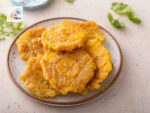
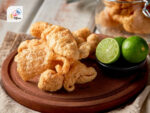
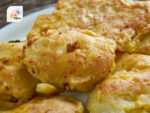
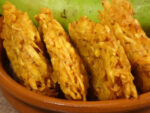

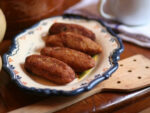
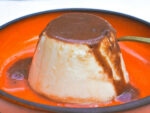

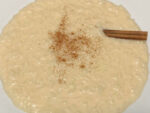
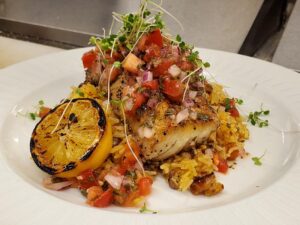
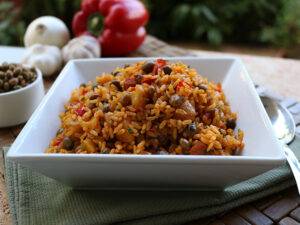

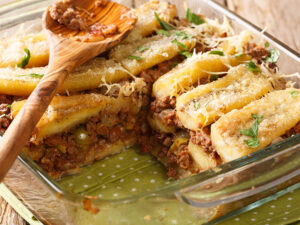
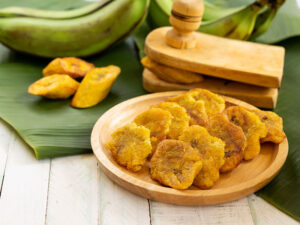

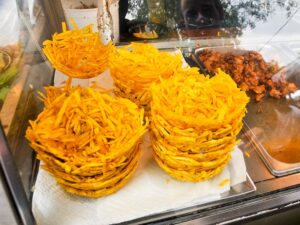
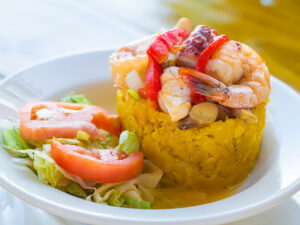
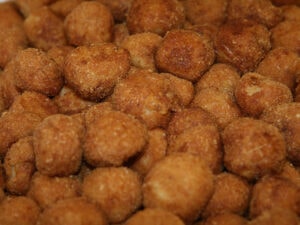
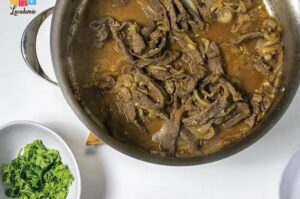
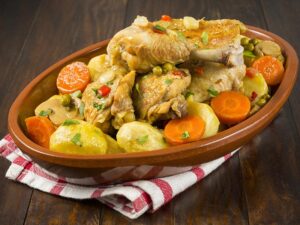
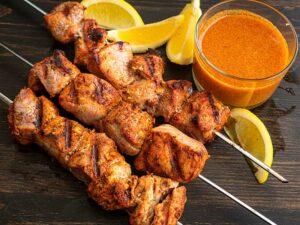
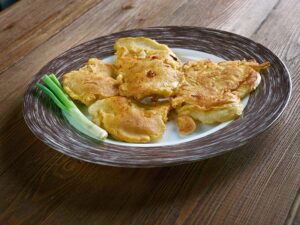
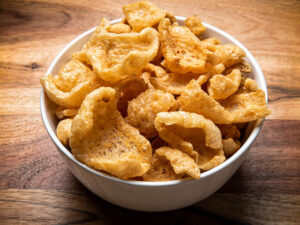
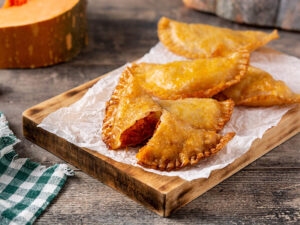
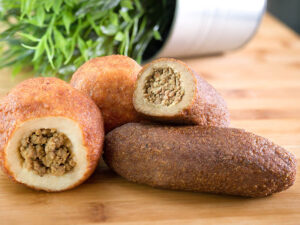
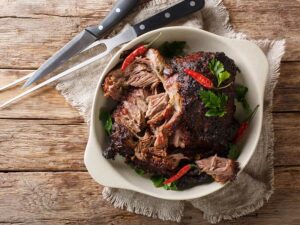
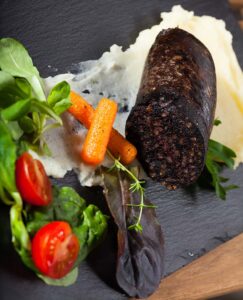
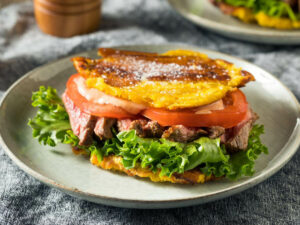

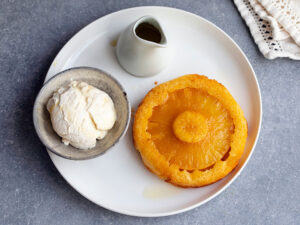
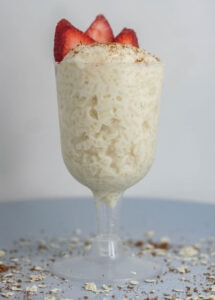
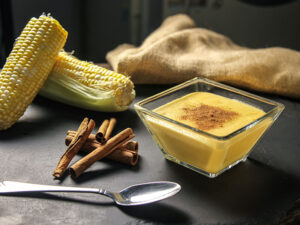

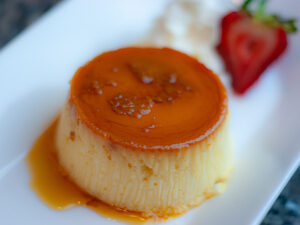


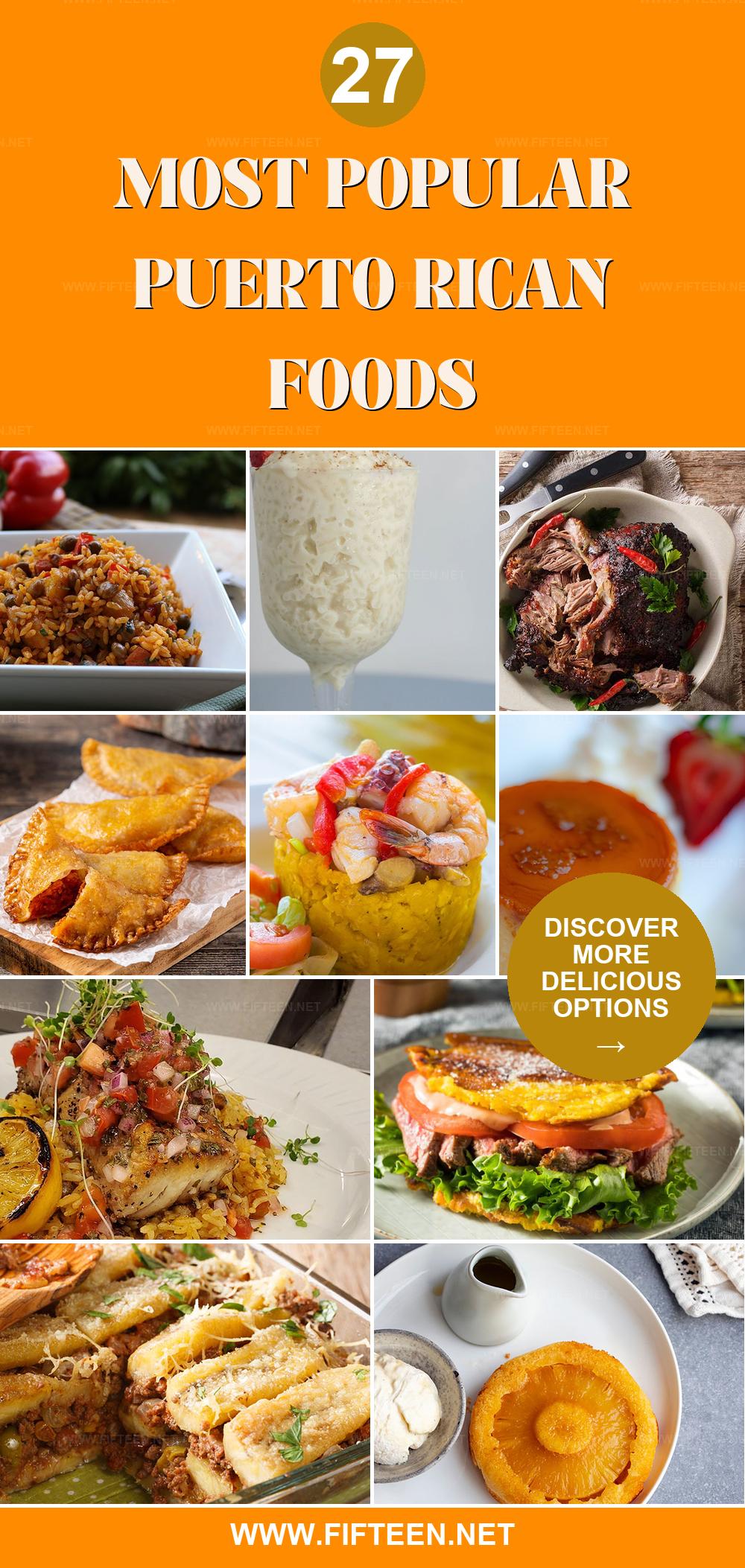
Jamie Scott
Editor in Chief, Senior Content Writer
Expertise
Home Cooking, Meal Planning, Recipe Development, Baking and Pastry, Food Editor, Cooking-video Maker, Western Food Evaluation Expert
Education
Le Cordon Bleu College of Culinary Arts
Local Community College, New York, NY
Jamie Scott is a skilled culinary expert and content creator specializing in Western cuisine. With over 15 years in the culinary field and formal training from Le Cordon Bleu, Paris, Jamie deeply understands how to blend nutrition with delicious flavors. His passion for cooking matches his commitment to making healthy eating accessible and enjoyable.
On Fifteen.net, Jamie brings a fresh perspective to classic dishes and beverages, offering readers insightful recipes, cooking tips, and a fresh view on meal planning that emphasizes taste, health, and simplicity.